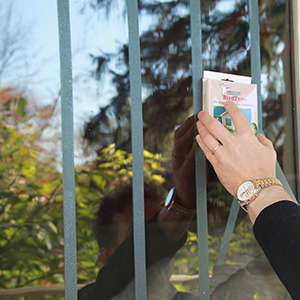
How to keep prairie birds, and us, safe
“How to keep prairie birds, and us, safe” was published in the Wyoming Tribune Eagle Feb. 5, 2022.
By Barb Gorges
Nurturing the prairie was the theme of this year’s Cheyenne Habitat Heroes workshop held last month. For me, that includes the plants, animals and people.
Cheyenne sits in the middle of the shortgrass prairie so what we “townies” do matters as well.
Zach Hutchinson, workshop presenter and community science coordinator for Audubon Rockies, reminded us of the study showing North America has lost 2.9 billion birds, including 53 percent of grassland birds, since 1970. This means that for every 100 birds you could count along a certain distance of our county roads then, today you would only count 47.
One of the biggest causes is loss of habitat, including the conversion of undeveloped land into subdivisions, commercial property or cropland. Cheyenne is going through a terrific building phase. The landscaping in new high density residential neighborhoods will soon draw in birds, but not the grassland birds. It is the ring of small-acreage landowners around the city who can make a difference.
First, what shape is the acreage in? Is it full of native prairie grasses and what range managers call forbes, which the rest of us call wildflowers? Or was it overgrazed and is now full of invasive weeds like toadflax and needs renewal?
Another workshop speaker, Aaron Maier, range ecologist for Audubon Rockies, talked at length about regenerative agriculture and how farmers are changing their practices so they spend less on fertilizers and trips with the tractor yet sequester more carbon, capture more moisture and accumulate more beneficial soil microbes.
Aaron also talked about healthy grassland grazing practices benefitting wildlife as well, as laid out by the Audubon Conservation Ranching Initiative. Ranchers following Audubon’s guidelines for best practices for land, wildlife and livestock management are guaranteed premium prices for their product marked as “Audubon Certified.”
But the small acreage owner is probably not going to be grazing cattle. In fact, without 30-36 acres and a seasonal rotation plan, they can’t even graze one horse for one year (without supplemental feed) but must keep them much of the year in a corral to avoid making their entire property into a dust bowl.
Not to say that there aren’t grassland birds that sometimes enjoy bare ground—after all, they evolved alongside the buffalo, famous for creating mosaics of bare ground in their migrations.
A lot of small acreage owners don’t have livestock, but they do have cats and dogs that can be very detrimental to grassland birds. It’s easy to see how, once you realize grassland birds nest on the ground.

Horned larks, western meadowlarks, vesper sparrows, savannah sparrows and other grassland bird species have come up with various ruses and camouflages to avoid native predators. However, they haven’t evolved yet to deal with what the American Bird Conservancy considers to be an invasive species: cats.
Cats kill more than a billion birds a year in the U.S. Zach pointed out that popular “trap, neuter and release” programs have a flaw—they allow cats to go back outside and kill more native birds and small mammals. It’s a touchy subject. I admit to having been the owner of an indoor/outdoor cat up until 1990 when I started keeping my cat indoors. Four cats later, I’m a proponent of catios—screened outdoor areas—and taking leashed cats for walks.
Grassland birds nest sometime between April and July. That’s a good time to keep dogs on a leash so they won’t find and eat bird eggs. And it’s an excellent time to abstain from mowing both the previous year’s and current year’s growth. If you value wildlife, mow only after consulting the professionals over at the Laramie County Conservation District.
However, you may want to forgo much vegetation around your house and outbuildings. The national Firewise program, firewise.org, has guidelines for protecting property from fire on the forest edges as well as in the grasslands.
And what can us townies do for grassland birds? Use less energy. Buy less new stuff. Every energy source I can think of has been detrimental to wildlife: harvesting whale oil, excavating peat, cutting firewood as well as producing the climate-changing fumes of coal, oil and natural gas and the toxic residue of nuclear, and building the cleaner but often habitat and migration-disrupting installments of hydro, wind and solar power.
It seems as soon as we come up with energy saving changes—like families having fewer children and more efficient appliances, someone invents something like the new energy-intensive game of cryptocurrency mining. Don’t mind me, I’m a trifle depressed after watching a new movie, the very dark comedy, “Don’t Look Up.”
But I plan to look up—spring bird migration will commence any day now.
Barb Gorges is the author of “Cheyenne Birds by the Month,” www.YuccaRoadPress.com.

Xxx













